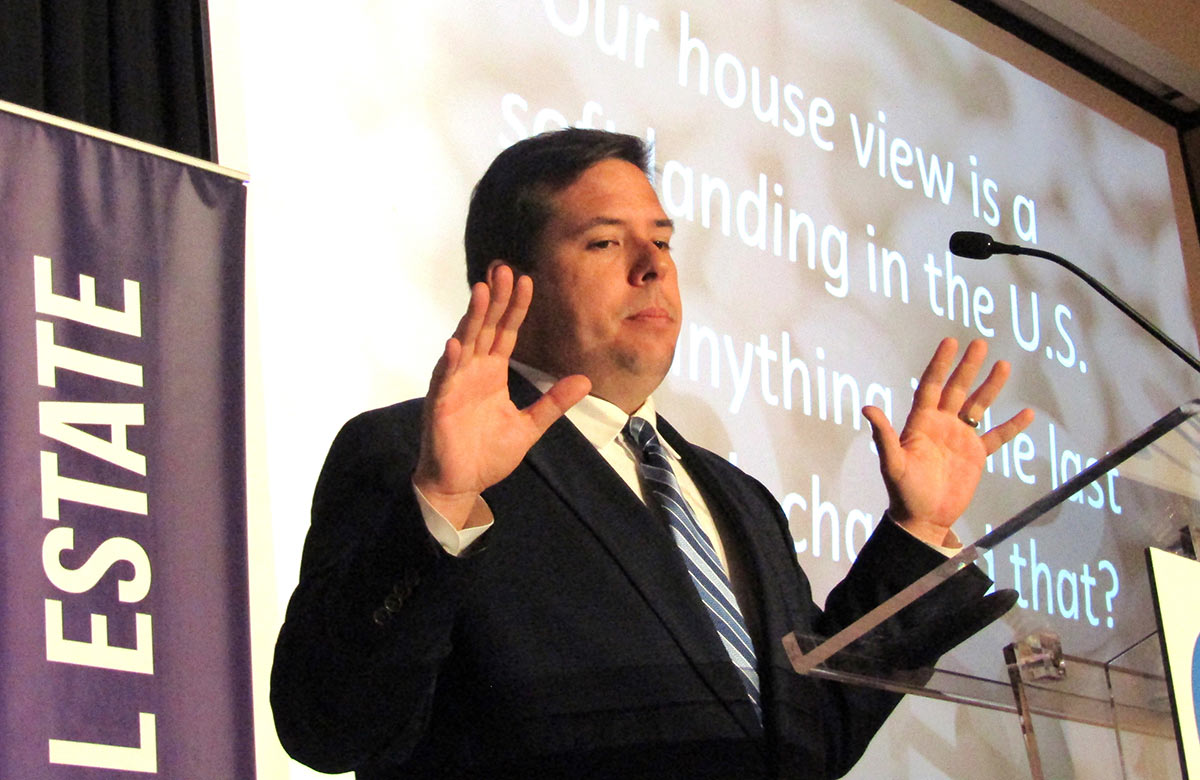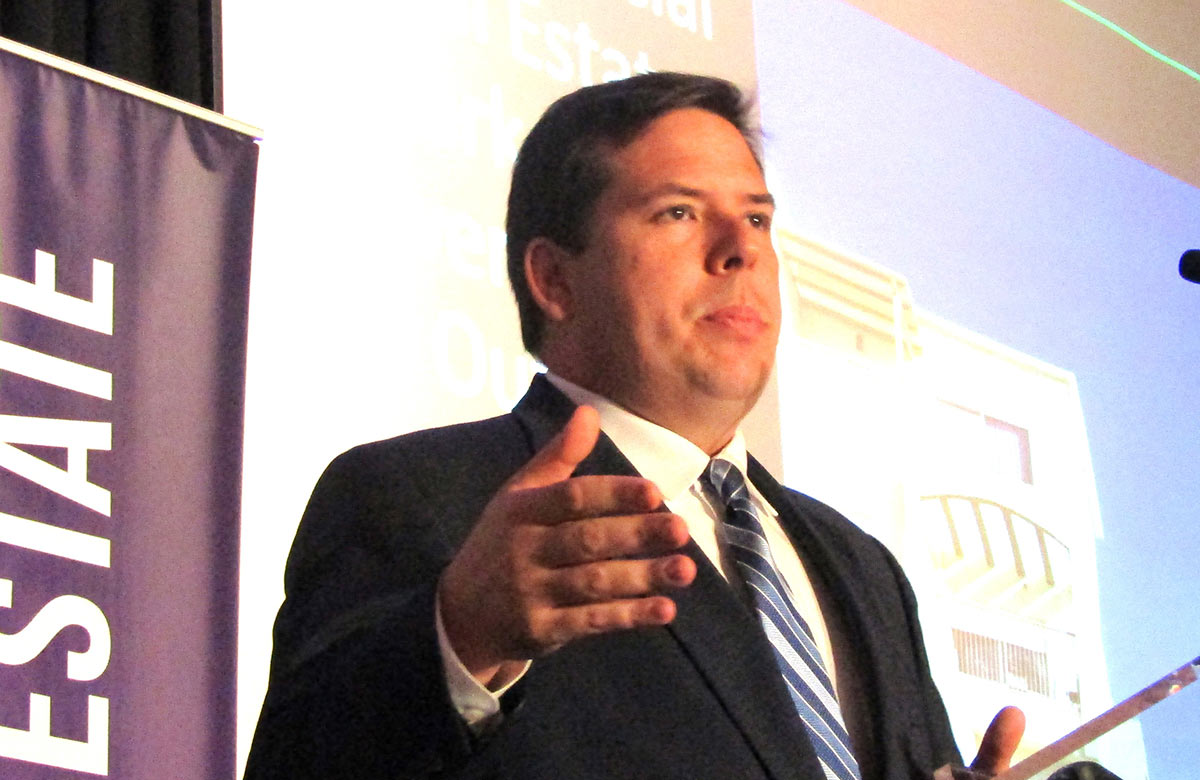
When it comes to commercial properties – such as retail buildings, office space, industrial and multifamily buildings – there’s a lot to be optimistic about in the Quad Cities.
That was one of the key messages delivered by real estate and business leaders Wednesday afternoon, Nov. 6, during the Quad Cities Regional Business Journal’s third annual Commercial Real Estate Symposium.
That event, which brought together more than 160 people at Bally’s Quad Cities Casino & Hotel in Rock Island, featured experts who discussed current trends in the region’s real estate landscape, such as notable property deals and new developments, as well as provided a market forecast.
The QCBJ Commercial Real Estate Symposium was sponsored by Platinum Sponsor Mel Foster Commercial Real Estate Services; and Silver Sponsors, GreenState Credit Union and the University of Northern Iowa.
When it comes to new developments and trends for the future, office space was the center of much of that discussion. In the QC region, “Employers are bringing back to the office at (an) accelerated pace,” according to information presented by keynote speaker Thad DenHartog, managing broker and principal, Mel Foster Commercial Real Estate Services.
“The trend of ‘work at home’ I think is over, especially in the Quad Cities,” he told the crowd.
While the office space vacancy rate is “scary” in many parts of the country, the situation is much better in this region, said Mr. DenHartog.
A recent national office report presented by Commercialedge.com listed the national office space vacancy rate near 20%. “Due to remote and hybrid work, downsized office footprints still appear to be the norm in the office sector,” according to that report.
However, in the Quad Cities, the office vacancy rate was 11% in Iowa and 21% in Illinois, Mr. DenHartog pointed out.
He added that the multifamily building market in the QC is “very strong.” So strong, in fact, that there have been some recent bidding wars from investors who wanted to get into the local multifamily market.
Here’s a look at some of the other local commercial real estate sectors outlined by Mr. DenHartog:
- Industrial: The vacancy rate is 8% in the region with 129 active industrial listings in the QC. The inventory has increased significantly in the past six months, he said.
- Retail: The vacancy rates are 8% in Iowa and 15% in Illinois with 421 active listings. The retail property trends include: smaller bay sizes and depth, drive-throughs for most food users. Lease terms are increasing to about five-year terms. The restaurant turnover continues.
- Ag land and farm: There is strong strong demand. Ag land in Iowa is going for $8,000 to $16,900 per acre. In Illinois, it’s $4,800 to $13,000 per acre.
- Commercial investment real estate: Inventory is becoming more available. “Purchasers of local investment products are more regional and national. Investors continue to chase returns and are not location sensitive,” according to information from Mr. DenHartog. He added that drug stories are no longer attractive investments. However, dollar stores, chain convenience stores, self storage and net leased industrial buildings are most desirable.
- Major market factors: Prime lending rate has gone from 8.5% in October 2023 to 8% this October; total commercial real estate sales volume is down 11% this year; the numbers of transactions is down 22%; spreads are normalizing, taming pricing levels; unemployment rate has gone from 3.8% last October to 4.1% this October.
- Trends to watch for next year: Refinancing risks and tightening lending standards; construction costs; local employment and workforce changes; changes to tax laws. Mr. DenHartog added, though, that he doesn’t see tax laws changing in the near future because of the results of Tuesday’s national elections.
Several people in the audience said they were especially pleased to hear about the trends and predictions for 2025 and beyond.
“I liked hearing about the forecasts. .. I’m pretty optimistic about it. It’s better than I expected,” said Dave Tallman with Shive-Hattery’s Moline office.
Wednesday’s symposium also featured presentations by Ben Keith, director of regional electric operations at MidAmerican Energy; and Travis Deese, associate director of multifamily research at CBRE Econometric Advisers.
Mr. Keith spoke about energy needs of data centers, and Mr. Deese gave a report on commercial real estate and multifamily buildings.
A recent CBRE report stated the U.S. multifamily market is showing signs of recovery as the vacancy rate fell in the third quarter for the first time in more than two years and renter demand outpaced record new supply deliveries.
The national multifamily vacancy rate dropped 0.2% quarter-over-quarter to 5.3%, reflecting a diminishing supply pipeline and strong renter demand. These factors are expected to push vacancy down in coming quarters. However, the Midwest saw year-over-year rent growth of 2.7% in this year’s third quarter.
Also in the multifamily housing market, 473,300 new units have been delivered over the past four quarters, a record level. However, construction starts have slowed markedly, portending an easing of supply pressure in coming years, according to information from CBRE.
After his presentation, Mr. Deese told the QCBJ that one of the main messages he hoped attendees would get from his presentation is that there are some “excellent business opportunities” in the region for multifamily building projects.
“In the Midwest, you guys are doing great on multifamily projects,” he said during Wednesday’s event.
Some other projects in the region and across Iowa center on creating more data centers, Mr. Keith told the crowd.
An $800 million data center has been proposed for Davenport. Meta will build a new data center in north Davenport. Vemerald, a wholly owned subsidiary of Meta Platforms, Inc., will store and transfer user and customer data for their operating systems. The proposed project would be located on 328 acres near Hillandale Road and Enterprise Way in north Davenport, according to the city. The project is expected to feature construction of two data halls and ancillary buildings totaling 715,000 square feet. The buildings on the data center campus would be used for the remote storage, processing, and distribution of large amounts of data.
Also, a proposed $750 million data center development is in the works for southwest Cedar Rapids, Iowa.
Mr. Keith outlined some trends and differing types of data centers. For instance, companies are looking to build new facilities or move into existing buildings, such as former gas stations, churches and warehouses.
He also pointed out two types of data centers in the works. They include the traditional center that stores data, processes, manages and protects data. The AI (artificial intelligence) center has upgraded tools in existing programs, uses Chat CPT, has automated designs and answers specific questions.
“This event was just very interesting. … I enjoyed seeing what’s happening with the data centers and everything else in the area,” said Maria Osterberg of Legat Architects in Moline, after the event.










